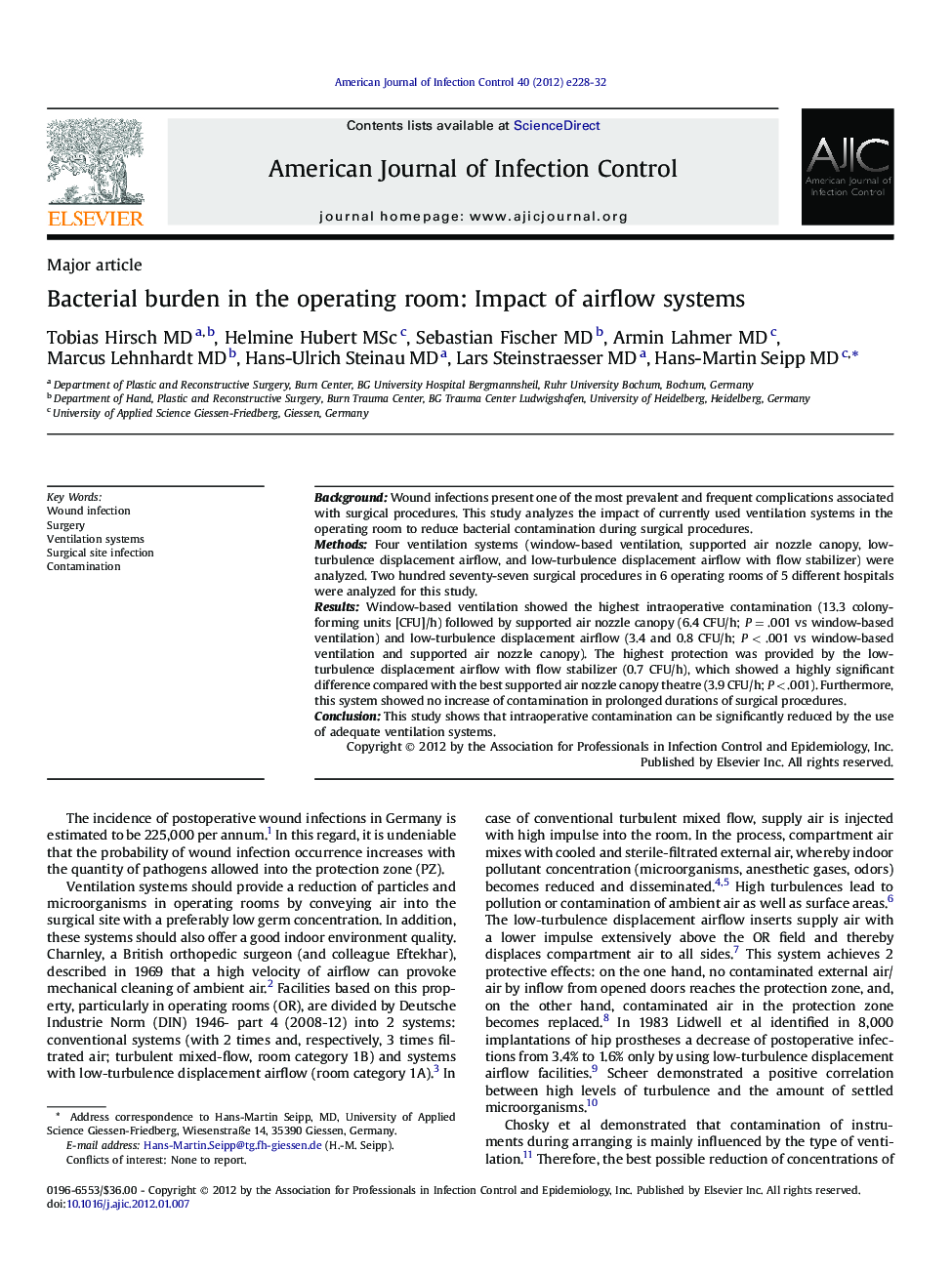| Article ID | Journal | Published Year | Pages | File Type |
|---|---|---|---|---|
| 2637858 | American Journal of Infection Control | 2012 | 5 Pages |
BackgroundWound infections present one of the most prevalent and frequent complications associated with surgical procedures. This study analyzes the impact of currently used ventilation systems in the operating room to reduce bacterial contamination during surgical procedures.MethodsFour ventilation systems (window-based ventilation, supported air nozzle canopy, low-turbulence displacement airflow, and low-turbulence displacement airflow with flow stabilizer) were analyzed. Two hundred seventy-seven surgical procedures in 6 operating rooms of 5 different hospitals were analyzed for this study.ResultsWindow-based ventilation showed the highest intraoperative contamination (13.3 colony-forming units [CFU]/h) followed by supported air nozzle canopy (6.4 CFU/h; P = .001 vs window-based ventilation) and low-turbulence displacement airflow (3.4 and 0.8 CFU/h; P < .001 vs window-based ventilation and supported air nozzle canopy). The highest protection was provided by the low-turbulence displacement airflow with flow stabilizer (0.7 CFU/h), which showed a highly significant difference compared with the best supported air nozzle canopy theatre (3.9 CFU/h; P < .001). Furthermore, this system showed no increase of contamination in prolonged durations of surgical procedures.ConclusionThis study shows that intraoperative contamination can be significantly reduced by the use of adequate ventilation systems.
